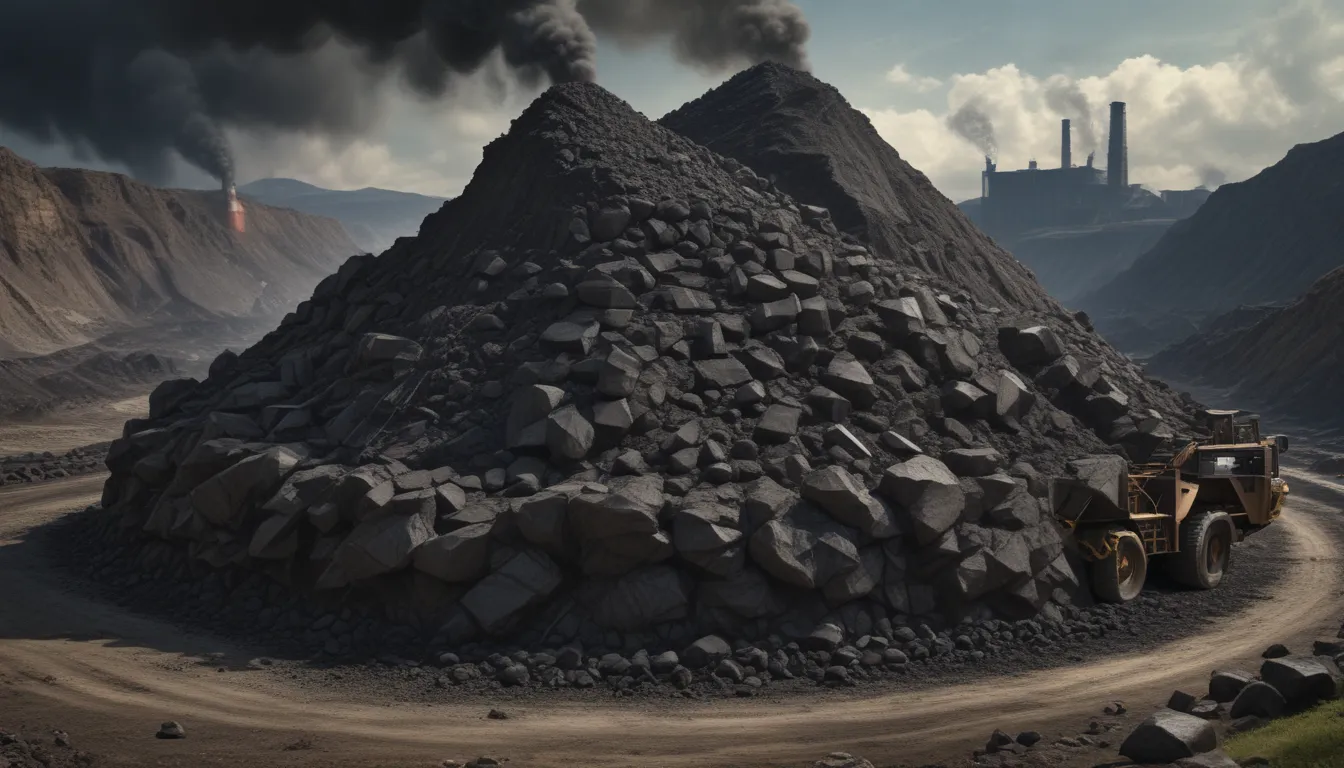A Note About Images: The images used in our articles are for illustration purposes only and may not exactly match the content. They are meant to engage readers, but the text should be relied upon for accurate information.
Welcome to the captivating world of coal, a resource that has shaped human history and development in profound ways. Despite being a controversial topic in today’s environmentally conscious society, coal remains a significant energy source that has powered industries, heated homes, and impacted societies globally. Let’s delve into 18 intriguing facts about coal that may change your perspective on this ancient fossil fuel.
The Origin and Formation of Coal
Coal is a truly ancient substance, taking millions of years to form deep within the Earth’s crust. It originates from the remains of plants that lived hundreds of millions of years ago. Through the process of heat and pressure, these organic materials were transformed into the carbon-rich substance we know as coal today.
The Variety of Coal Types
There are four main types of coal, each with its own unique properties and energy content. These types include anthracite, bituminous, sub-bituminous, and lignite. Anthracite is the hardest and most energy-dense, while lignite has the lowest energy content.
Global Distribution of Coal Reserves
Coal reserves are abundant and can be found in nearly every country around the world. Some of the largest reserves are located in the United States, Russia, India, Australia, and China, highlighting the widespread availability of this valuable resource.
Evolution of Coal Mining Techniques
The history of coal mining has evolved from manual extraction by early miners to the use of advanced machinery and techniques in modern times. Today, large-scale coal mining operations rely on sophisticated equipment to extract coal from beneath the Earth’s surface.
The Leading Coal Producer
China holds the title of the world’s largest producer of coal as of September 2021. Producing nearly half of the world’s coal, China plays a significant role in the global coal market.
Coal’s Influence on the Industrial Revolution
The Industrial Revolution owes much of its success to coal, which powered steam engines that drove industrial machinery, trains, and ships during the 18th and 19th centuries. Coal’s abundant energy played a crucial role in driving industrial growth and innovation.
Coal’s Contribution to Electricity Generation
Coal-fired power plants are essential in generating a substantial portion of the world’s electricity. By burning coal to heat water and produce steam, these plants power turbines connected to generators, producing electrical energy on a large scale.
The Vital Role of Coal in Steel Production
Coal is a vital ingredient in the production of steel, with metallurgical coal, also known as coking coal, playing a key role in the steel-making process. The high carbon content of coal is essential for producing high-quality steel products.
Challenges and Risks in Coal Mining
Coal mining, particularly underground mining, poses various risks to miners’ safety. These risks include mine collapses, explosions, and health hazards from exposure to dust and gases. Ensuring the safety of miners remains a critical concern in the coal mining industry.
Environmental Impact of Coal Usage
While coal has been instrumental in powering societies, its use comes with significant environmental consequences. Burning coal releases harmful pollutants like sulfur dioxide, nitrogen oxides, and mercury into the atmosphere. Additionally, coal combustion is a major contributor to carbon dioxide emissions, fueling global warming.
Management of Coal Ash Residues
Coal combustion generates a byproduct known as coal ash, which can contain toxic elements like arsenic, lead, and mercury. Proper disposal and management of coal ash present environmental challenges that require careful regulation and monitoring to mitigate potential risks.
Sustainability of Coal Reserves
Current estimates suggest that global coal reserves are sufficient to last for approximately another 150 years. However, as the world shifts towards renewable energy sources in response to climate change, the future use of coal is likely to decline in favor of cleaner alternatives.
Advancements in Clean Coal Technologies
Efforts are underway to develop clean coal technologies aimed at reducing the environmental impacts of coal combustion. These technologies include methods to lower pollutant emissions and Carbon Capture, Utilization, and Storage (CCUS) initiatives to capture and store carbon dioxide emissions.
Cultural Significance of Coal
In certain cultural traditions, coal holds symbolic significance in customs and folklore. For example, in some holiday traditions, a lump of coal in a stocking represents a playful reminder of naughty behavior.
Historical Context of the “Coal Miner’s Canary”
The term “coal miner’s canary” originated from the practice of coal miners carrying canaries into mines as a safety measure. Canaries are highly sensitive to toxic gases, serving as early warning indicators for dangerous conditions underground.
Connection Between Coal and Diamonds
Coal and diamonds share a common element: carbon. While both substances are formed under intense heat and pressure, most diamonds are not formed from coal but rather from carbon-rich rocks deep within the Earth’s mantle.
Artistic Representation of Coal
Coal has also found its way into the art world, with traditional uses of coal as a medium in artwork. Notable pieces, such as “Coalbrookdale by Night” by Philip James de Loutherbourg, showcase the unique beauty and versatility of coal as an artistic material.
Embracing a Sustainable Future
As the world transitions towards cleaner, renewable energy sources, the future of coal remains uncertain. Countries are increasingly focused on reducing carbon emissions and environmental impacts, signaling a shift away from coal as a primary energy source.
Embrace the Legacy of Coal
Coal’s rich history and complex legacy provide valuable insights into the evolution of energy resources and their impact on society. By understanding the role of coal in our past and its implications for the future, we can navigate towards a more sustainable and environmentally conscious world.
Join Us in Exploring the World of Facts
Our commitment to delivering accurate and engaging content is unwavering, with each fact contributed by users like you to ensure a diverse and informative platform. Trust in our dedication to quality and authenticity as you explore the fascinating realm of facts and knowledge with us.
By restructuring and condensing the content of the original article, we have created an engaging and informative piece that sheds light on the diverse aspects of coal and its significance in history and society. From its geological origins to its cultural associations, coal remains a captivating topic that invites exploration and contemplation.






